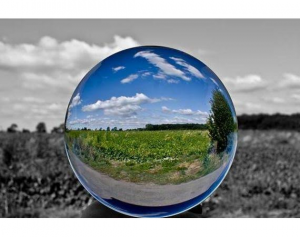Want to become a great leader? Here are the top ten leadership qualities for a good leader.
- Honesty and integrity
- Vision and Purpose
- Inspire Others
- Decision Making Capabilities
- Good Communicator
- Confidence
- Commitment and Passion
- Delegation and Empowerment
- Creativity and Innovation
- Emotional Intelligence
1. Honesty and Integrity
 The 34th President of the United States, Dwight.D.Eisenhower once said, “The supreme quality of leadership is unquestionably integrity. Without it, no real success is possible, no matter whether it is on a section gang, a football field, in an army, or in an office.” Honesty and integrity are two important ingredients that make a good leader. How can you expect your followers to be honest when you lack these qualities yourself? Leaders succeed when they stick to their values and core beliefs and without ethics, this will not be possible.
The 34th President of the United States, Dwight.D.Eisenhower once said, “The supreme quality of leadership is unquestionably integrity. Without it, no real success is possible, no matter whether it is on a section gang, a football field, in an army, or in an office.” Honesty and integrity are two important ingredients that make a good leader. How can you expect your followers to be honest when you lack these qualities yourself? Leaders succeed when they stick to their values and core beliefs and without ethics, this will not be possible.
2. Vision and Purpose
 “Good business leaders create a vision, articulate the vision, passionately own the vision, and relentlessly drive it to completion.”—Jack Welch
“Good business leaders create a vision, articulate the vision, passionately own the vision, and relentlessly drive it to completion.”—Jack Welch
Good leaders always have a vision and purpose. They not only visualize the future themselves but also share their vision with their followers. When their followers were able to see the big picture, they can see where they are heading. A great leader goes above and beyond and explains why they are moving in the direction they are moving and shares the strategy and action plan to achieve that goal.
3. Inspire Others
 Probably the most difficult job for a leader is to persuade others to follow. It can only be possible if you inspire your followers by setting a good example. When the going gets tough, they look up to you and see how you react to the situation. If you handle it well, they will follow you. As a leader, should think positive and this positive approach should be visible through your actions. Stay calm under pressure and keep the motivation level up. As John Quincy Adams puts it, “If your actions inspire others to dream more, learn more, do more and become more, you are a leader.” If you are successful in inspiring your subordinates, you can easily overcome any current and future challenge easily.
Probably the most difficult job for a leader is to persuade others to follow. It can only be possible if you inspire your followers by setting a good example. When the going gets tough, they look up to you and see how you react to the situation. If you handle it well, they will follow you. As a leader, should think positive and this positive approach should be visible through your actions. Stay calm under pressure and keep the motivation level up. As John Quincy Adams puts it, “If your actions inspire others to dream more, learn more, do more and become more, you are a leader.” If you are successful in inspiring your subordinates, you can easily overcome any current and future challenge easily.
4. Decision-Making Capabilities
 Apart from having a futuristic vision, a leader should have the ability to take the right decision at the right time. Decisions taken by leaders have a profound impact on the masses. A leader should think long and hard before taking a decision but once the decision is taken, stand by it. Although most leaders take decisions on their own, it is highly recommended that you consult key stakeholders before taking a decision. After all, they are the ones who will benefit or suffer from your decisions.
Apart from having a futuristic vision, a leader should have the ability to take the right decision at the right time. Decisions taken by leaders have a profound impact on the masses. A leader should think long and hard before taking a decision but once the decision is taken, stand by it. Although most leaders take decisions on their own, it is highly recommended that you consult key stakeholders before taking a decision. After all, they are the ones who will benefit or suffer from your decisions.
5. Good Communicator
 Until you clearly communicate your vision to your team and tell them the strategy to achieve the goal, it will be very difficult for you to get the results you want. Simply put, if you are unable to communicate your message effectively to your team, you can never be a good leader. A good communicator can be a good leader. Words have the power to motivate people and make them do the unthinkable. If you use them effectively, you can also achieve better results.
Until you clearly communicate your vision to your team and tell them the strategy to achieve the goal, it will be very difficult for you to get the results you want. Simply put, if you are unable to communicate your message effectively to your team, you can never be a good leader. A good communicator can be a good leader. Words have the power to motivate people and make them do the unthinkable. If you use them effectively, you can also achieve better results.
6. Confidence
 To be an effective leader, you should be confident enough to ensure that other follow your commands. If you are unsure about your own decisions and qualities, then your subordinates will never follow you. As a leader, you have to be oozing with confidence, show some swagger and assertiveness to gain the respect of your subordinates. This does not mean that you should be overconfident, but you should at least reflect the degree of confidence required to ensure that your followers trust you as a leader.
To be an effective leader, you should be confident enough to ensure that other follow your commands. If you are unsure about your own decisions and qualities, then your subordinates will never follow you. As a leader, you have to be oozing with confidence, show some swagger and assertiveness to gain the respect of your subordinates. This does not mean that you should be overconfident, but you should at least reflect the degree of confidence required to ensure that your followers trust you as a leader.
7. Commitment and Passion
 Your teams look up to you and if you want them to give them their all, you will have to be passionate about it too. When your teammates see you getting your hands dirty, they will also give their best shot. It will also help you to gain the respect of your subordinates and infuse new energy in your team members, which helps them to perform better. If they feel that you are not fully committed or lacks passion, then it would be an uphill task for the leader to motivate your followers to achieve the goal.
Your teams look up to you and if you want them to give them their all, you will have to be passionate about it too. When your teammates see you getting your hands dirty, they will also give their best shot. It will also help you to gain the respect of your subordinates and infuse new energy in your team members, which helps them to perform better. If they feel that you are not fully committed or lacks passion, then it would be an uphill task for the leader to motivate your followers to achieve the goal.
8. Delegation and Empowerment
 You cannot do everything, right. It is important for a leader to focus on key responsibilities while leaving the rest to others. By that, I mean empowering your followers and delegating tasks to them. If you continue to micromanage your subordinates, it will develop a lack of trust and more importantly, you will not be able to focus on important matters, as you should be. Delegate tasks to your subordinates and see how they perform. Provide them with all the resources and support they need to achieve the objective and give them a chance to bear the responsibility.
You cannot do everything, right. It is important for a leader to focus on key responsibilities while leaving the rest to others. By that, I mean empowering your followers and delegating tasks to them. If you continue to micromanage your subordinates, it will develop a lack of trust and more importantly, you will not be able to focus on important matters, as you should be. Delegate tasks to your subordinates and see how they perform. Provide them with all the resources and support they need to achieve the objective and give them a chance to bear the responsibility.
9. Creativity and Innovation
 What separates a leader from a follower? Steve Jobs, the greatest visionary of our time answers this question this way, “Innovation distinguishes between a leader and a follower.” In order to get ahead in today’s fast-paced world, a leader must be creative and innovative at the same time. Creative thinking and constant innovation is what makes you and your team stand out from the crowd. Think out of the box to come up with unique ideas and turn those ideas and goals into reality.
What separates a leader from a follower? Steve Jobs, the greatest visionary of our time answers this question this way, “Innovation distinguishes between a leader and a follower.” In order to get ahead in today’s fast-paced world, a leader must be creative and innovative at the same time. Creative thinking and constant innovation is what makes you and your team stand out from the crowd. Think out of the box to come up with unique ideas and turn those ideas and goals into reality.
10. Emotional Intelligence
 Good leaders always have higher influence but how do they increase their influence on the point where people accept what they say. They do this by connecting with people emotionally. That is where emotional intelligence comes into play.
Good leaders always have higher influence but how do they increase their influence on the point where people accept what they say. They do this by connecting with people emotionally. That is where emotional intelligence comes into play.
Here are some of the reasons why a leader should be emotionally intelligent.
- Manage emotions effectively
- Better social awareness
- Seamless communications
- Conflict Resolution
With emotional intelligence, leaders can control their emotions, which prevents negative emotions from influencing their decision-making skills. As a result, they are less likely to make hasty decisions. Moreover, emotionally intelligent leaders are great at understanding the emotions and care about the feelings of others. That is not all, leaders who have this leadership quality not only handle conflict in a better way but also play an important role in conflict resolution.











 The 34th President of the United States, Dwight.D.Eisenhower once said, “The supreme quality of leadership is unquestionably integrity. Without it, no real success is possible, no matter whether it is on a section gang, a football field, in an army, or in an office.” Honesty and integrity are two important ingredients that make a good leader. How can you expect your followers to be honest when you lack these qualities yourself? Leaders succeed when they stick to their values and core beliefs and without ethics, this will not be possible.
The 34th President of the United States, Dwight.D.Eisenhower once said, “The supreme quality of leadership is unquestionably integrity. Without it, no real success is possible, no matter whether it is on a section gang, a football field, in an army, or in an office.” Honesty and integrity are two important ingredients that make a good leader. How can you expect your followers to be honest when you lack these qualities yourself? Leaders succeed when they stick to their values and core beliefs and without ethics, this will not be possible. “Good business leaders create a vision, articulate the vision, passionately own the vision, and relentlessly drive it to completion.”—Jack Welch
“Good business leaders create a vision, articulate the vision, passionately own the vision, and relentlessly drive it to completion.”—Jack Welch Probably the most difficult job for a leader is to persuade others to follow. It can only be possible if you inspire your followers by setting a good example. When the going gets tough, they look up to you and see how you react to the situation. If you handle it well, they will follow you. As a leader, should think positive and this positive approach should be visible through your actions. Stay calm under pressure and keep the motivation level up. As John Quincy Adams puts it, “If your actions inspire others to dream more, learn more, do more and become more, you are a leader.” If you are successful in inspiring your subordinates, you can easily overcome any current and future challenge easily.
Probably the most difficult job for a leader is to persuade others to follow. It can only be possible if you inspire your followers by setting a good example. When the going gets tough, they look up to you and see how you react to the situation. If you handle it well, they will follow you. As a leader, should think positive and this positive approach should be visible through your actions. Stay calm under pressure and keep the motivation level up. As John Quincy Adams puts it, “If your actions inspire others to dream more, learn more, do more and become more, you are a leader.” If you are successful in inspiring your subordinates, you can easily overcome any current and future challenge easily. Apart from having a futuristic vision, a leader should have the ability to take the right decision at the right time. Decisions taken by leaders have a profound impact on the masses. A leader should think long and hard before taking a decision but once the decision is taken, stand by it. Although most leaders take decisions on their own, it is highly recommended that you consult key stakeholders before taking a decision. After all, they are the ones who will benefit or suffer from your decisions.
Apart from having a futuristic vision, a leader should have the ability to take the right decision at the right time. Decisions taken by leaders have a profound impact on the masses. A leader should think long and hard before taking a decision but once the decision is taken, stand by it. Although most leaders take decisions on their own, it is highly recommended that you consult key stakeholders before taking a decision. After all, they are the ones who will benefit or suffer from your decisions. Until you clearly communicate your vision to your team and tell them the strategy to achieve the goal, it will be very difficult for you to get the results you want. Simply put, if you are unable to communicate your message effectively to your team, you can never be a good leader. A good communicator can be a good leader. Words have the power to motivate people and make them do the unthinkable. If you use them effectively, you can also achieve better results.
Until you clearly communicate your vision to your team and tell them the strategy to achieve the goal, it will be very difficult for you to get the results you want. Simply put, if you are unable to communicate your message effectively to your team, you can never be a good leader. A good communicator can be a good leader. Words have the power to motivate people and make them do the unthinkable. If you use them effectively, you can also achieve better results. To be an
To be an  Your teams look up to you and if you want them to give them their all, you will have to be passionate about it too. When your teammates see you getting your hands dirty, they will also give their best shot. It will also help you to gain the respect of your subordinates and infuse new energy in your team members, which helps them to perform better. If they feel that you are not fully committed or lacks passion, then it would be an uphill task for the leader to motivate your followers to achieve the goal.
Your teams look up to you and if you want them to give them their all, you will have to be passionate about it too. When your teammates see you getting your hands dirty, they will also give their best shot. It will also help you to gain the respect of your subordinates and infuse new energy in your team members, which helps them to perform better. If they feel that you are not fully committed or lacks passion, then it would be an uphill task for the leader to motivate your followers to achieve the goal. You cannot do everything, right. It is important for a leader to focus on key responsibilities while leaving the rest to others. By that, I mean empowering your followers and delegating tasks to them. If you continue to micromanage your subordinates, it will develop a lack of trust and more importantly, you will not be able to focus on important matters, as you should be. Delegate tasks to your subordinates and see how they perform. Provide them with all the resources and support they need to achieve the objective and give them a chance to bear the responsibility.
You cannot do everything, right. It is important for a leader to focus on key responsibilities while leaving the rest to others. By that, I mean empowering your followers and delegating tasks to them. If you continue to micromanage your subordinates, it will develop a lack of trust and more importantly, you will not be able to focus on important matters, as you should be. Delegate tasks to your subordinates and see how they perform. Provide them with all the resources and support they need to achieve the objective and give them a chance to bear the responsibility. What separates a leader from a follower?
What separates a leader from a follower?  Good leaders always have higher influence but how do they increase their influence on the point where people accept what they say. They do this by connecting with people emotionally. That is where emotional intelligence comes into play.
Good leaders always have higher influence but how do they increase their influence on the point where people accept what they say. They do this by connecting with people emotionally. That is where emotional intelligence comes into play.